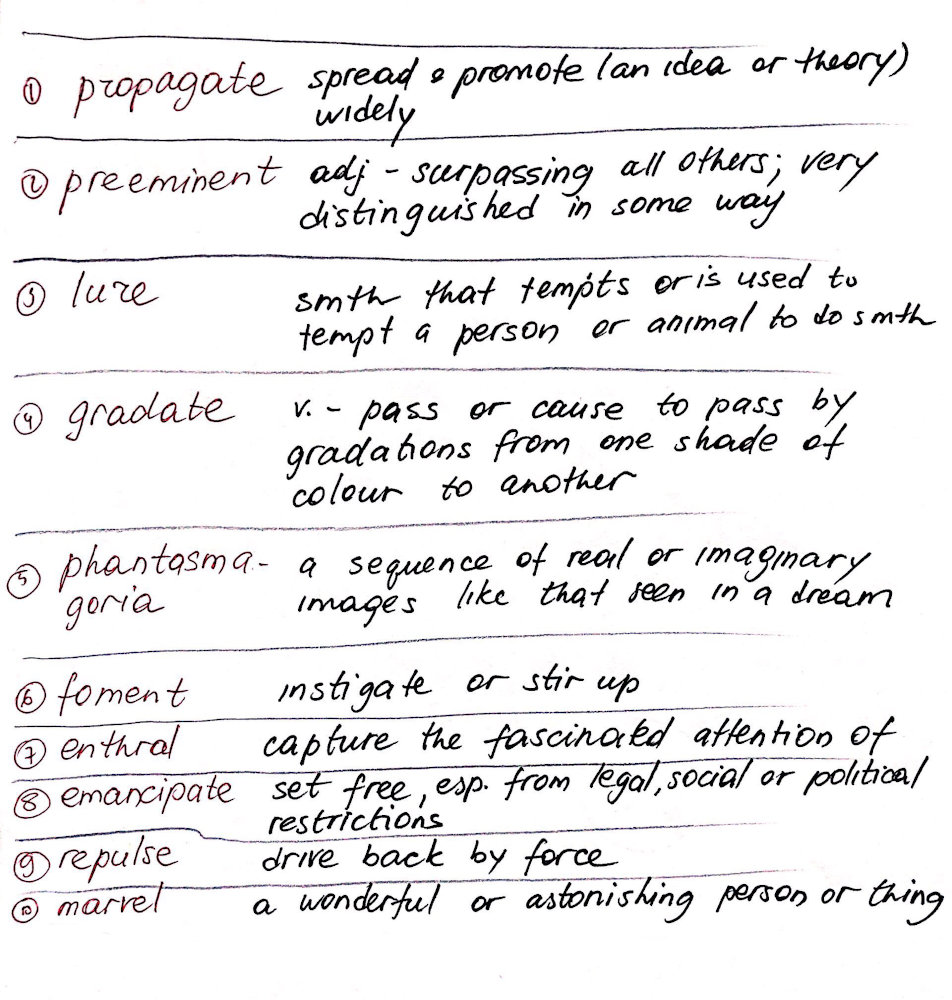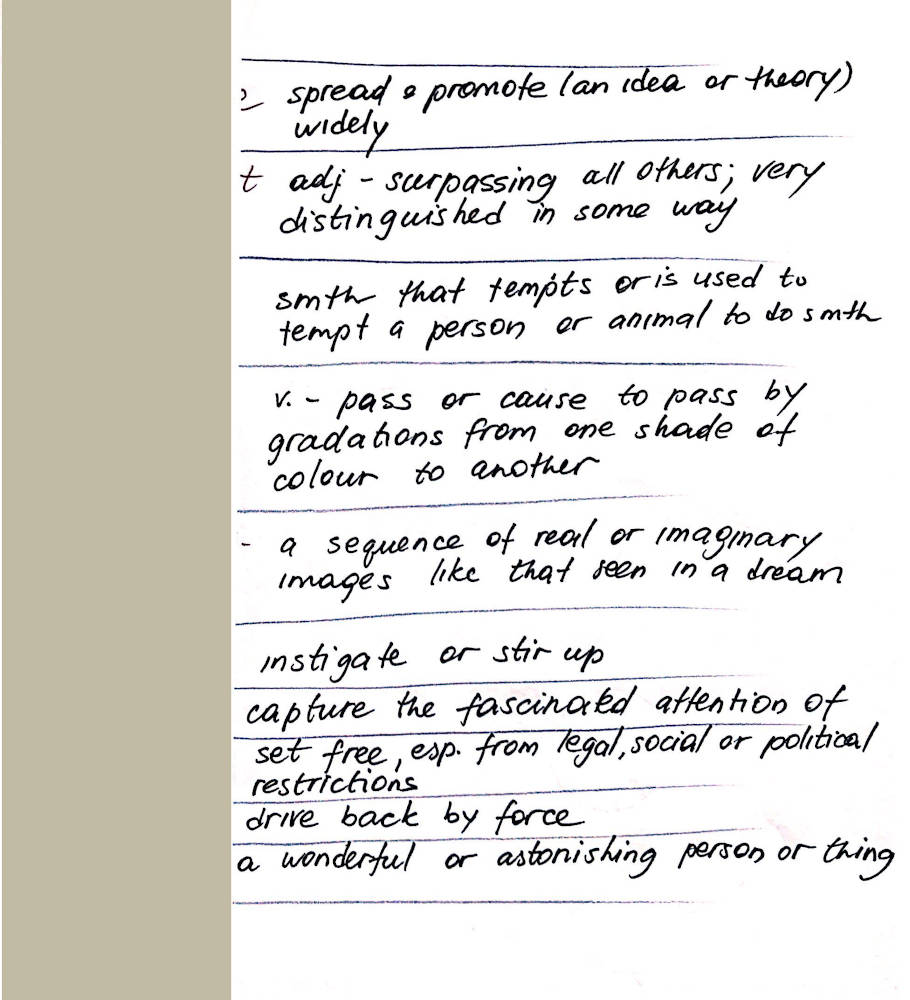The idea of multiple intelligences might be familiar to teachers, but do students know about it?
Here, I will present a strategy that will help you move forward with your learning.
Everyone has a unique way to learn, and it is up to an individual to figure out the best way to do it. I am offering this 6 days challenge, by the end of which you will have a better understanding of what method works for you when you try to learn something new.
For example, you want to learn 10 new words in English. How do you go about it?
Day 1: SOLO LEARNING
Read an article of your interest and pull out 10 words that you need to learn. For example, I took my words from this art history article about Productivism. Write down these words and their definitions, like so:

Read these words and definitions out loud several times, then cover the words with a piece of paper, like so:

Read the definitions and test if you were able to remember the words.
Then cover the definitions to check if you could define these words in your own way. You can also put the words into sentences to contextualise them.

Day 2: TEAM LEARNING
Check if you can remember the words you learnt in Day 1. How many were you able to memorise? The best way to test it is to look at the definitions of these words to see if you remembered the terms, and then put the terms into sentences. If your retention rate was 70% and more, you found your perfect way to learn words, and you can repeat the same method day after day. If, however, you were able to recall less than 70% of the words, then try this method:
Ask a friend to read the definitions for you, and see if you can remember the terms. This way of recalling the words relies more on your auditory memory. However, you might be picturing these words in your mind, while your friend says the definitions out loud. Notice, if any visual associations are triggered when you hear the words; or, perhaps, by hearing the definitions, the rhythm and melody of words trigger your memory, and evoke examples from your life where you could use these terms.
DAY 3: ACTIVE LEARNING
Ask the same friend to read the definitions for you to see how many words you can recall. The same logic is applied here: if you remembered 70% of words or more, you found the most effective way to train your memory. If not, let’s try something else.
Put on your comfy shoes or running shoes, depending on your preference of physical exercise. If you bike, free up some time to do a few circles around your neighbourhood. Pick the first three to five words from the list and memorise them. Because there are only three to five words to keep in your memory, it is realistic — your working memory can retain it for a few minutes. Then, go outside for a walk, and keep repeating these words in your mind, spinning them around in your head, or if you feel comfortable, you can mutter them under your breath. Keep walking and keep repeating the words.
DAY 4: VISUAL LEARNING
Go for a walk the next day to see if you can recall these three to five words. Did it work?
The next strategy is to test whether you are a visual learner. Perhaps, you have some synaesthetic qualities: when you see a word, it triggers the vision of colours or textures in your mind. For example, for me the word “ensue” has ochre colour, or the colour of sand on a sunny beach in Sydney, Australia. These colours and textures have very little to do with the meaning of this word: “happen or occur afterwards or as a result” (Oxford dictionary). But I can create a sentence that will combine the visual associations naturally triggered in my mind with the word that I want to memorise.
The decision to apply an ochre colour onto my new painting ensued from my recent visit to Coogee beach.
After writing the sentence that is so personal to my natural inclination to imagine, and to my personal memories, it would be hard not to remember this word, because I situated it into my life.
DAY 5: AUDITORY LEARNING
First, test if you remembered the word “ensue”. Are you able to use it in a sentence?
Then, record your 10 words and their definitions on your phone or computer and save the audio file. Play this track to yourself, repeat the words out loud. For some people, recording their own voice and replaying the audio file can be a very effective way to memorise new information. For example, this is my recording.
DAY 6: CONTEXTUAL LEARNING
Test if you remembered the words from the previous day.
Put the list of 10 words in front of you. Type the first word into Google, and open a website where this word is mentioned. Read the sentence with this word and surrounding sentences. See if you can absorb the meaning of the word by looking at the context where it is used.
You can also type “ensue in a sentence” into Google, and the website Yourdictionary will show up. This website will give you a few examples of sentences with this word. Read these sentences to deeply understand the meaning of the word and how to use it in a sentence.
It’s all about testing and learning what works best for you! If something doesn’t work, move on to the next method until you find the perfect fit.